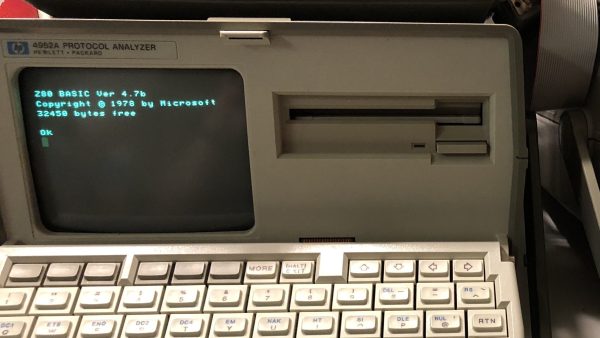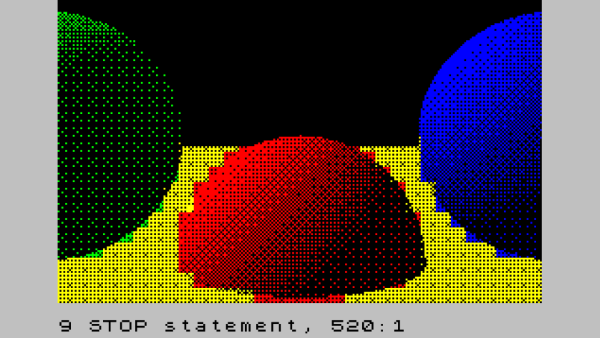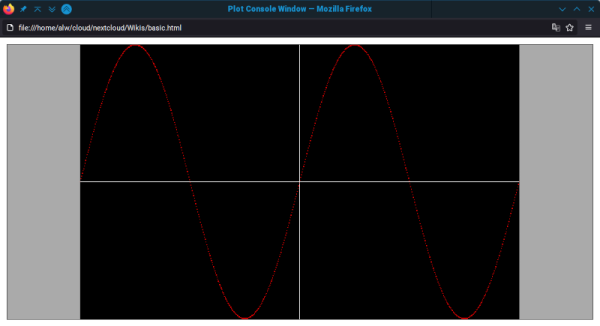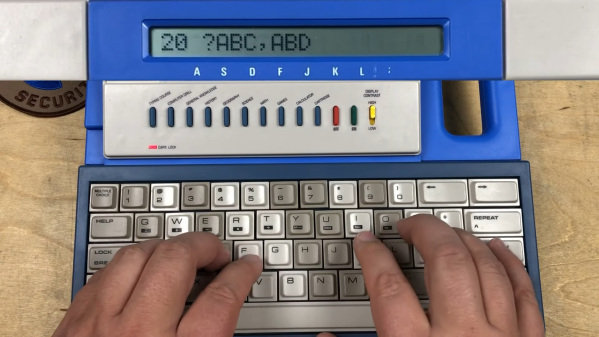It may be hard to believe, but BASIC turned 60 this week. Opinions about the computer language vary, of course, but one thing everyone can agree on is that Professors Kemeny and Kurtz really stretched things with the acronym: “Beginner’s All-Purpose Symbolic Instruction Code” is pretty tortured, after all. BASIC seems to be the one language it’s universally cool to hate, at least in its current incarnations like Visual Basic and VBA. But back in 1964, the idea that you could plunk someone down in front of a terminal, or more likely a teletype, and have them bang out a working “Hello, world!” program with just a few minutes of instruction was pretty revolutionary. Yeah, line numbers and GOTO statements encouraged spaghetti code and engrained bad programming habits, but at least it got people coding. And perhaps most importantly, it served as a “gateway drug” into the culture for a lot of us. Many of us would have chosen other paths in life had it not been for those dopamine hits provided by getting that first BASIC program working. So happy birthday BASIC!
basic106 Articles
You Can Run BASIC On An Old HP 4592 Protocol Analyzer
What do you do when you find an ancient piece of test gear and want to have fun? Well, you can always try getting BASIC running on it, and that’s precisely what [David Kuder] did.
The HP4952A Protocol Analyzer actually looks a lot like an old computer, even if it was never meant for general-purpose use. The heart of the machine is a Zilog Z80 CPU, though, so it shares a lot in common with microcomputers of its era.
Among other hacks, [David] worked to get Microsoft Basic-80 running on the machine. Initially, he was only able to get it up and running on the display, with no way to read the keyboard, disk, or access the serial port. Eventually, by diving into the nitty-gritty of the machine, he was able to at least get the keyboard working along with some basic BASIC programs. Usable memory is just 8KB, but you can do a fair bit with that when you’ve only got a 32×16 display for output anyway!
It’s a neat hack and one that was extendable to the HP4957A as well. We’ve seen similar machines on these pages before, too! If you’ve got your own neat retro hacks on the boil, don’t hesitate to drop us a line!
[Thanks to Christopher Zell for the tip!]
Video Poker Takes Your Money In 10 Lines Of BASIC
It wasn’t easy, but [D. Scott Williamson] succeeded in implementing Jacks or Better Video Poker in 10 lines of BASIC, complete with flashing light and sound! Each round, one places a bet then plays a hand of 5-card draw, hoping to end up with Jacks or better.
This program is [Scott]’s entry into the 2024 BASIC 10 Liner Contest, which at this writing has concluded submissions and expects to announce results on April 6th 2024. Contestants may choose any 8-bit computer system BASIC, and must implement their program within ten lines of code (classically limited to 80 characters per line, but there are different categories with different constraints on line width.)
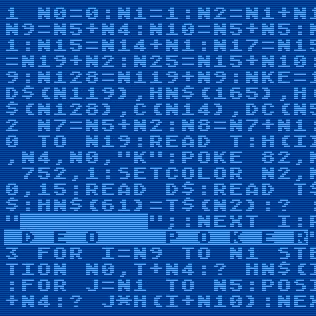
We’ve seen impressive 10-line BASIC programs before, like this re-implementation of the E.T. video game. (Fun fact: while considered one of the worst video games of all time, there’s a compelling case to be made that while it was a flop, it was ahead of its time and mostly just misunderstood.)
These programs don’t look much like the typical BASIC programs many of us remember. They are exercises in information density, where every character counts. So we’re delighted to see [Scott] also provides a version of his code formatted and commented for better readability, and a logical overview that steps through each line.
He spends a little time talking about the various challenges, as well. For example, hand ranking required a clever solution. IF…THEN conditionals would rapidly consume the limited lines of code, so hands are ranked programmatically. The 52-card deck is also simulated, rather than simply generating random cards on the fly.
The result looks great, and you can watch it in action in the video, just under the page break. If this sort of challenge tweaks your interest, there’s plenty of time to get started on next year’s BASIC 10 Liner Contest. Fire up those emulators!
Continue reading “Video Poker Takes Your Money In 10 Lines Of BASIC”
A ZX Spectrum Raytracer, In BASIC
[Gabriel Gambetta] knows a few things about ray tracers, being the author of Tiny Raytracer, a raytracer written in just 912 bytes of JavaScript. As a long-time fellow sufferer of the UK-designed ZX Spectrum, could these two love affairs be merged? Could the Tiny Raytracer fit on the ZX Spectrum? In BASIC? The answer is an affirmative, albeit with our beloved speccy’s many limitations.
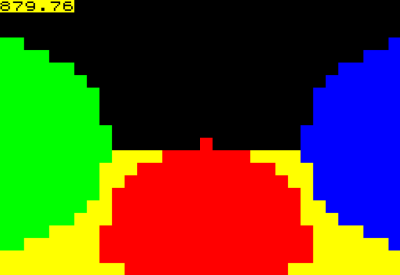
The story starts with [Gabriel]’s Computer Graphics From Scratch (CGFS) raytracer algorithms and an existing code base that was ported to the ZX Spectrum’s very limited BASIC dialect, using VSCode for editing, BAS2TAP to generate a tape image file (essentially an audio track) and executed with FUSE. With the toolchain sorted, [Gabriel] adds just enough code to deal with the ray intersection equations of a sphere, and renders a three-sphere scene to a 32×22 pixel colour image, taking a mere 15 minutes of runtime. Fellow sufferers will remember the spectrum had a 32×22 block attribute array (or colour array) with two colour values for foreground and background pixels. Each attribute block contains 8×8 pixels, each of which could be foreground (on) or background (off.) The next stage was then to expand the code to handle pixels as well as blocks, by simply expanding the raytracing to the full 256×176 resolution, and for each block simply determine the two most common colours, and run with those for the whole block. It sort of works, in a very spectrum-esq ‘attribute clash’ kind of fashion.
BASIC In Your Browser
If you are a certain age or just like retrocomputers, you probably have a soft spot for good old-fashioned BASIC. If you miss those days but don’t want to install a modern interpreter, you don’t have to. Just load a web page containing the “BASIC Anywhere Machine” from [CJ Veniot]. Worried about it being “in the cloud?” It isn’t? It runs in your browser, and if you are a TiddlyWiki fan, it will even live inside your Wiki, which you can host as you please.
The project has lots of features, including some integration back into TiddlyWiki, which we haven’t tried. But you can use graphics commands, work with the mouse, and do other fun things.
Is Microsoft BASIC Hidden In This Educational Child’s Toy?
The VTech PreComputer 1000 is a rather ancient toy computer that was available in the distant misty past of 1988. It featured a keyboard and a variety of simple learning games, but does it also feature Microsoft BASIC? [Robin] of 8-Bit Show and Tell dove in to find out.
Officially, the PreComputer was programmable in a form of BASIC, referred to by VTech as PRE-BASIC V1.0. Given that the system has a Z80 CPU and there’s little information in the manual about this programming language, [Robin] was suspicious as to whether it was based on Microsoft BASIC-80. Thus, an examination was in order to figure out just how this BASIC implementation worked, and whether it shared anything with Microsoft’s own effort.
We won’t spoil the conclusions, but there are some strong commonalities between VTech’s BASIC and Microsoft’s version from this era. The variable names in particular are a strong hint as to what’s going on under the hood. The video is worth a watch for anyone that’s a fan of early microcomputer history, BASIC, or just the weird computer-like devices of yesteryear. We also love the idea that the PreComputer 1000 was actually quite a capable machine hiding behind a single-line LCD display.
Continue reading “Is Microsoft BASIC Hidden In This Educational Child’s Toy?”
The End Of Basic?
Many people, one way or another, got started programming computers using some kind of Basic. The language was developed at Dartmouth specifically so people could write simple programs without much training. However, Basic found roots in small computers and grew to where it is today, virtually unrecognizable. Writing things in something like Visual Basic may be easier than some programming tasks, but it requires a lot of tools and some reading or training. We aren’t sure where the name EndBasic came from, but this program — written in Rust — aims to bring Basic back to a simpler time. Sort of.
You can run the program in a browser, locally, or connected to a cloud service. It looks like old-fashioned Basic at first. But the more you dig in, the odder it gets. The command line is more akin to a Python REPL. You type things, and they happen. It took a while to figure out that you need to enter EDIT to write a program. Then, what you type gets saved until you press escape. The syntax is Basic-like but has oddities. There are no line numbers, but you can use labels that start with an at sign.


